YELLOWSTONE (Day 4 - part 2)
I next stopped at Artist Paint Pots with its 1/3 mile trail.


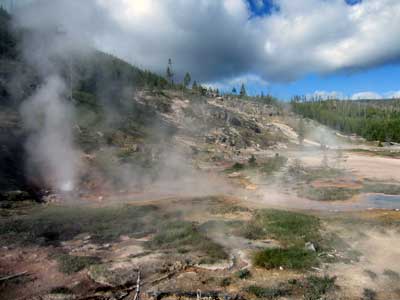





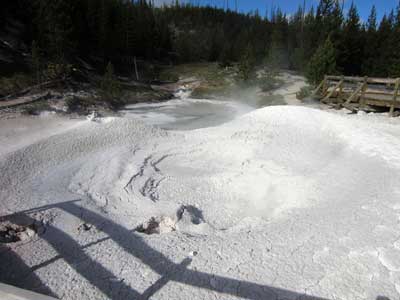

Mud pots


Terrace Springs, as the name implies, was a couple hot pools on a hill.



Fountain Paint Pots was a 1/2 mile boardwalk loop.

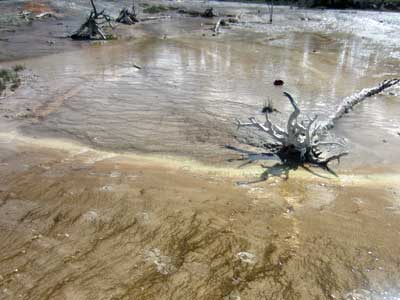

Eruption of Clepsydra Geyser


The Fountain Paint Pot was a pool of bubbling mud. Thermophiles consume some of the gases and convert them into sulfuric acid, which breaks the rhyolite (volcanic rock) down into clay. This mixes with water and forms these mud pots.


Silex Spring
Midway Geyser Basin was home to Yellowstone's largest hot spring... and many other incredible hydrothermal wonders along a 1/2 mile trail.

Map of the basin


The Firehole River... gets lots of hot water flowing into it.


Some very hot ground... with elk prints right in the middle of it!
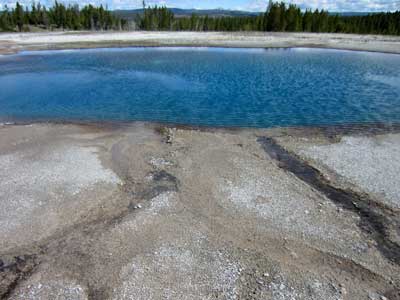
The Turquoise Pool


The Opal Pool


Approaching Grand Prismatic Spring, Yellowstone's largest spring ... with a sign showing what it looks like from above
Grand Prismatic Spring stretches up to 200 feet across. With a temperature of 160 degrees F, it is often covered with steam. Deep below us, magma from an active volcano heats water that rises to the surface through fissures in the rocks. The result is a hot spring that pours almost 500 gallons of hot water each minute into the Firehole River.
The brilliant blue comes from sunlight being scattered by fine particles suspended in the water. The yellow, orange and brown are from thermophiles.

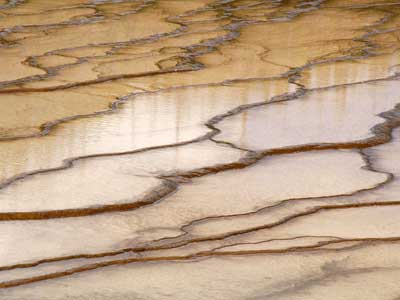
Minerals dissolved in the hot water are deposited and gradually build the terraced features of the pool.

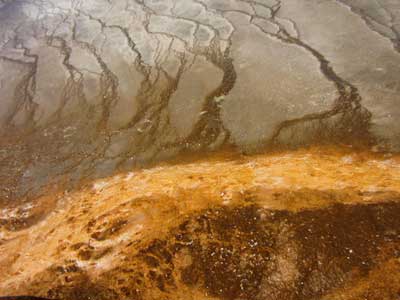




Excelsior Geyser
Biscuit Basin was a 1/4 mile loop. This thermal basin is particularly volatile, with shifting runoff patterns that kill forests. Its name comes from biscuit-shaped mineral formations.

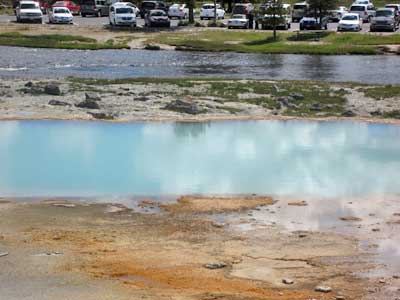
Firehole River again... and stripes of metal cars, blue river, aqua pools and red earth


Black Diamond Pool


Rivers of color


Sapphire Pool


Mustard Spring... and plants that didn't make it
return • continue

